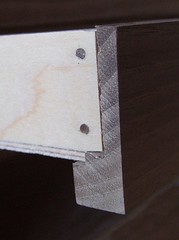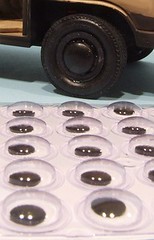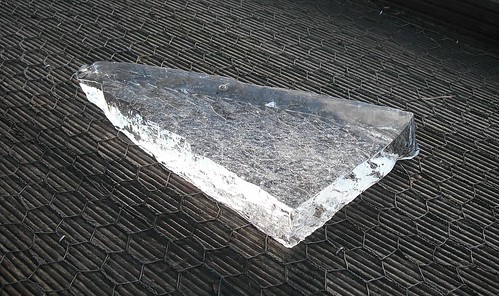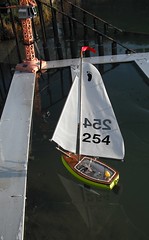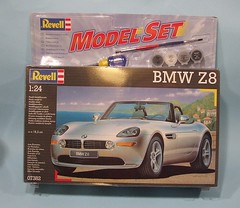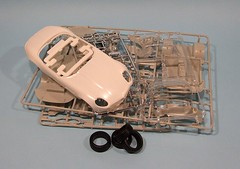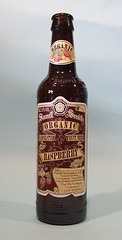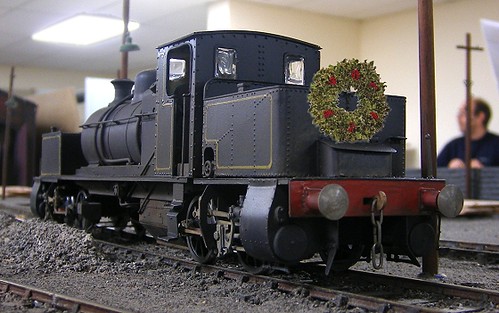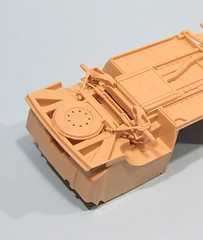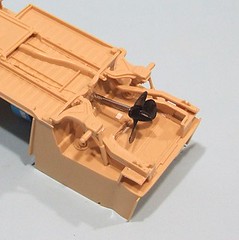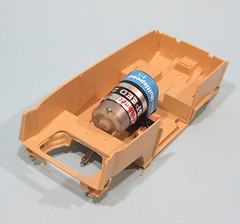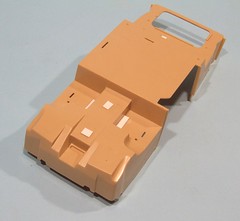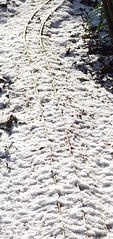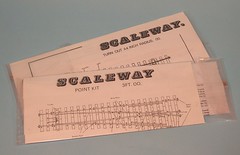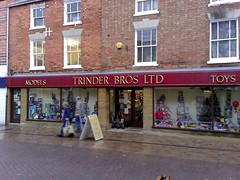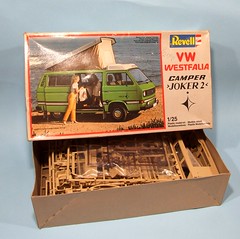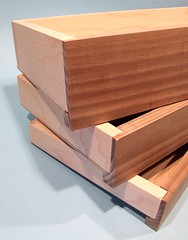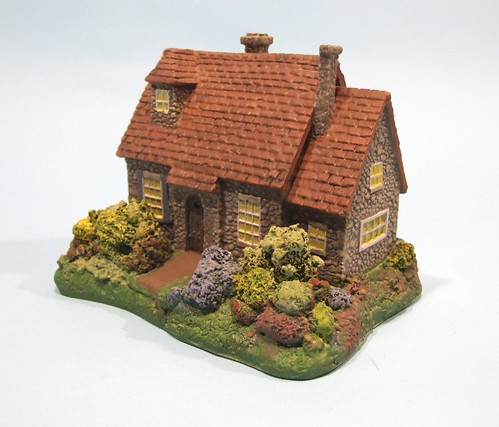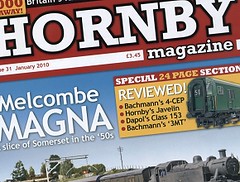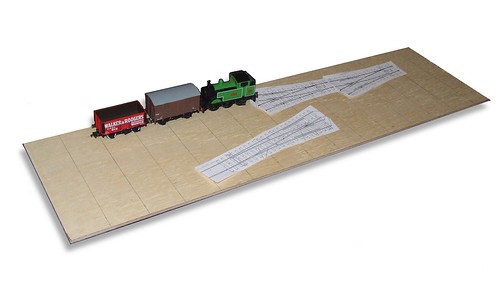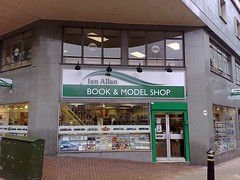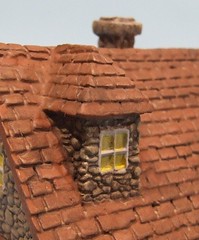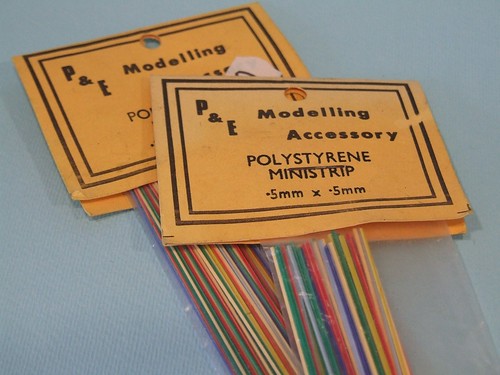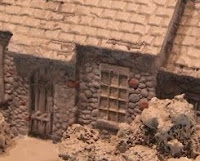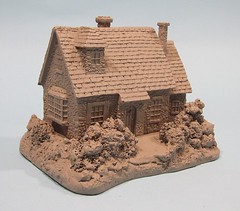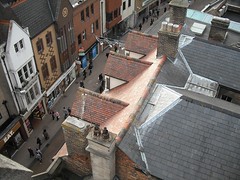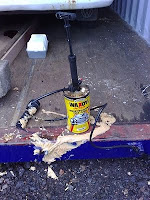To commute to work, I bought a 10 year old Peugeot 206. It's green, has quite a lot of toys and apart from a wing mirror held together with tape, seems pretty good. But a week last Thursday it developed an "entertaining" fault - without my intervention the left indicator would start flashing. Waggling the stalk seemed to stop this but is hardly what you need to be doing when navigating Coventry's traffic in the dark !
A quick search on the web revealed this to be a common problem with older 206's and also
showed the fix - but without any photos. So, having performed the relatively easy task, I thought you'd be interested in seeing some. Anyway, the Haynes manual isn't very clear on this job and doesn't bother telling you the size of tools required.
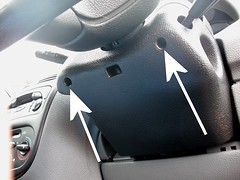
Stage 1 - Remove the plastic casing for the steering column. For this you need a T20 Torx screwdriver (That's a star shapped one, don't try normal screwdrivers as you'll damage the fixings - and one in a multi-tool will be too short and fat) .
Halfords had sold out of the normal ones but
do a set of Allan key style versions for a tenner so that's that I used. Undoing the screws releases the
top part of the casing and allows it to be pulled away. The bottom part can then be unclipped. Haynes tells you to remove the volume control stalk but I left it plugged in in the foot well. Just be careful not to catch it with your feet.

Stage 2 - Unplug the connectors. Each has a black clip (arrowed) which pushes in. The plugs then slide off easily but be careful not to tug the wires too much.
I didn't bother disconnecting the battery to do this job but suspect that it would be a sensible move. When you re-connect it beware that some electronic things may need looking at - not sure if the stereo holds it code without power for instance.

Stage 3 - A T10 Torx screwdriver is needed to undo these screws. The switch then slides out sideways. It took a bit of a wiggle to get it past the fascia panel. Unlock the steering column adjustment as this helps a bit.
At this point you could just replace the switch
if you can find one. If that's the plan just plug the new one and reassemble the casing.
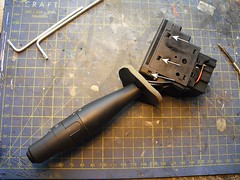
Stage 4 - I'm too stingy to buy a new part if I can fix the old one. Hence the switch was taken to the modelling board and the top removed by pushing the plastic tabs using a small screwdriver. A bit of care here as this
is plastic.
Cleanliness is important here too, don't work in an area full of detritus as we don't want anything untoward getting in the switch. Watch the springs under the lid too - they shouldn't come off but it's wise to keep an eye on them.
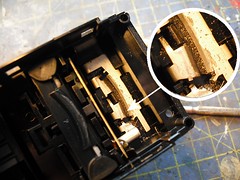
Stage 5 - Here is the culprit. Metal shavings. When you move the stalk, a steel contact slides in the metal grove you can see here. After many years and a lot of indicating, it wears and deposits filings in the contacts. These sit at the bottom of the track and sometimes make the circuit causing the indicators to flash. When I wiggled the stalk this was moving them enough to stop the problem - but it was only going to get worse.
Blowing them away and brushing out the grove fixed things. I also took a moment to smooth off the contact (not shown in the photo) with some emery paper as well and hope this will stop the wear for a while.
Reassembly is the reverse of the above. When putting the top on the switch, make sure the spikey thing at the end of the stalk engages with the silvery grooved thing otherwise when you turn the light switch it won't turn them on. If you don't fiddle though, this will already be in the right position.
Do test the unit before putting it in the back of the car - any stiffness in movement probably means something's not gone back right. Incidentally, the stalk sticking out the opposite side of the switch to the operating stalk is part of the self-cancelling mechanism and should go in and out as you work the switch.
I carried out this work a week ago and haven't had any problems with the indicators since. This work is (IMGHO) well within the capability of any DIY'er and for an hours effort can save you quite a lot of cash. Good Luck and happy flashing !
Legal note: This is a record of what I did. If you try the same and it doesn't work, don't blame me !
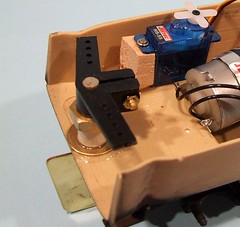 If this thing is to work on water I had better sort out some steering. The easiest way to do this appeared to involve a ready to use rudder as found on the racks of most model boat parts suppliers.
If this thing is to work on water I had better sort out some steering. The easiest way to do this appeared to involve a ready to use rudder as found on the racks of most model boat parts suppliers.